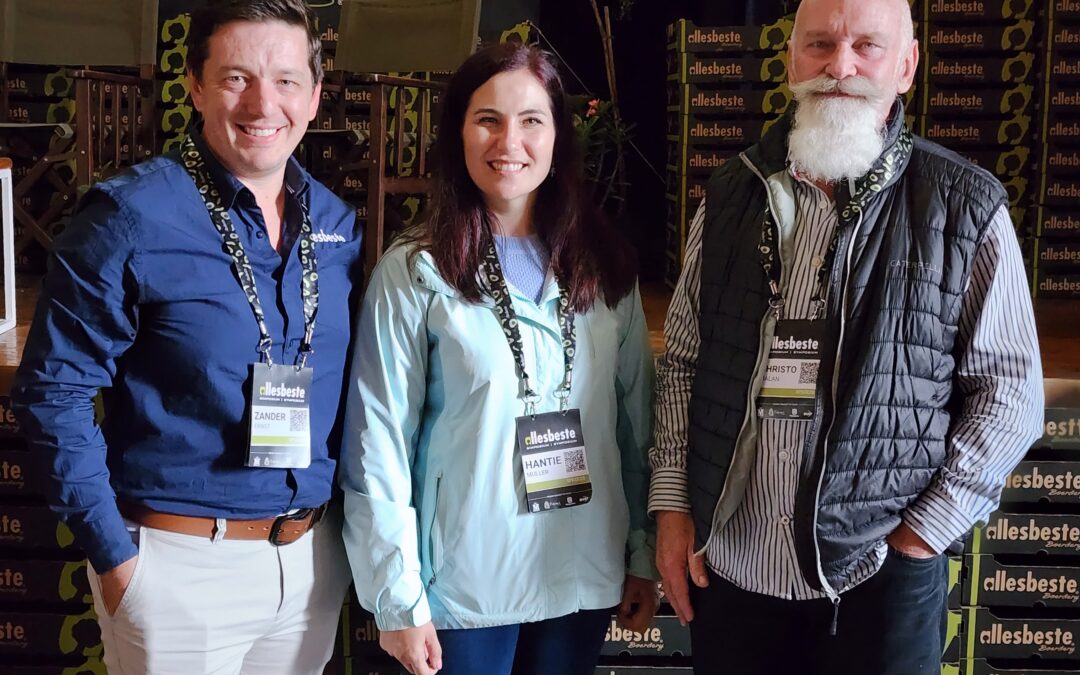This year saw the return of the AllesBeste symposium held in Tzaneen. Industry specialists and delegates in the avocado industry came together to once again discuss the industry and participate in discussions around new research and practices.
Allesbeste is famous for the Maluma avocado, a dark-skinned cultivar with an immaculate appearance and astonishing taste – researched and developed by the Allesbeste nursery. Its texture is smooth and ideal for any recipe. It has a nutty taste with characteristics like small seeds with more flesh, purple-black thick skin, and smooth and light fibre.
Allesbeste Boerdery made great strides in commercialising the Maluma avocado, which has over the past 23 years been successfully introduced to Peru, Spain, Israel, Brazil, Argentina, Chile, the USA, Portugal, Morocco, Egypt, India, Tanzania, Zambia, Zimbabwe, Mozambique, New Zealand and Australia. Worldwide Maluma plantings have reached 5 200 ha and South African growers have established 2 570 ha of Maluma avocados in the country of origin.
Ethylene
Jorge Garcia and Lianne Jones from It’s Fresh along with Donovan Lewis, marketing manager for Allesbeste, discussed intelligent ethylene control at the symposium. “One of the biggest problems to solve is not only to bring the fruit to its final destination, but landing quality fruit that is able to ripen full of flavour and give consumers the experience that they were hoping for,” said Lewis.
Ethylene is a plant hormone that induces ripening and deterioration in fresh produce and it is produced by most fresh produce. There is a wide variety in the amount of ethylene emitted across all fresh produce types, as well as the level of sensitivity to this hormone. Too much ethylene, and fresh produce is at risk of becoming overripe. Too little, and the normal biochemical pathways are inhibited. Riper fruit produces more ethylene and triggers surrounding fruit, therefore, managing ethylene is essential in extending the shipping/storage life and quality of fresh produce.
However, certain methods negatively impact fruit ripening, flavour, texture, and nutrition. It’s Fresh uses their own product called – It’s Fresh Active. It is formed of natural minerals, which are applied and integrated with different types of packaging. Ethylene molecules in the air around the fruit are drawn to Active, binding to its unique honeycomb structure. The technology reduces the concentration of ethylene in the air around fruit, reducing ripening rates it is highly versatile and can be applied at every stage of the fresh produce supply chain and is food contact approved.
Data and technology
Edrean Ernst and Jandré Killian from RIC Technologies led a session discussing technology, benchmarks and measurement. One of the important issues that was discussed is that, having a lot of different subsystems from different providers/platforms, is not a problem and should be seen as a good approach. The issue that should be addressed is that the information is properly interpreted and displayed on a dashboard where the information can be pulled together.
“Data that are fragmented across different farming support systems can be pulled together to be displayed on meaningful dashboards. Allesbeste accomplishes this through their farm management system, called Root, as well as the Qlik Business Intelligence platform, supported by RIC Consulting,” Ernst mentioned.
Variety selection
Mary-Lu Arpaia from the University of California and Dr Guy Witney discussed avocado breeding and selection. They shared their views and insights on the future of avocado varieties and where they believe the next paradigm shift will lie with avocado varieties.
They discussed the challenges of breeding new avocado varieties. It is a long process – growers look at between 15 to 25 years from seed to commercialisation. It is like looking for a needle in a haystack and the success rate is very low, because finding both the horticultural and fruit traits in a single selection is challenging. The fruit must be ripened in order to evaluate; ripening time depends on maturity. The eating quality changes throughout the season; it takes a lot of work to find the optimum maturity window for selection. Industry standard ‘Hass’ sets a high standard for postharvest and eating quality
“As growers we need to understand that the market will only move on new cultivars if we actively plant them, and we need these genetics to improve our position in the market. Single cultivar production threatens long term sustainability and we have to believe actively that there is a world beyond that,” said Arpaia.
Orchard practises
Dr Christo Malan from the University of Stellenbosch, Hantie Muller from Agri Librium and Dr Steve Oosthuyse from HortResearch SA discussed orchard practices and nutrition and shared some of their research findings.
Malan spoke about efficient nutrient utilisation and ion charge management in orchards. Muller, who visits growers regularly, shared her insights on some general mistakes growers make in young orchards and when in production.
Zander Ernst from Allesbeste gave feedback on their trellising and ultra-high-density experiments, using the Maluma variety in Tatura and vertical trellis systems.
He says that in terms of production so far, the Tatura system has proven more successful while vertical systems are easier to manage. He led panel discussions after the presentations.

